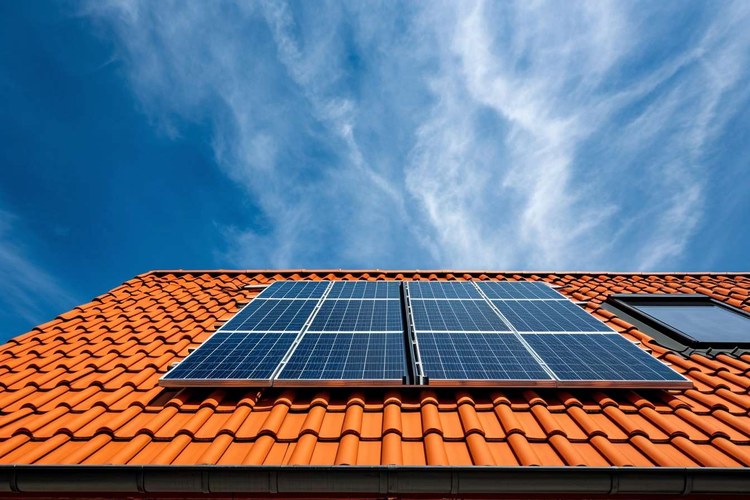Solar-Powered Air Conditioning: Cooling Your Home Efficiently
In an era of increasing energy costs and growing environmental concerns, homeowners are constantly seeking innovative ways to cool their homes while reducing their carbon footprint. Solar-powered air conditioning offers a promising solution, combining the power of renewable energy with efficient cooling technology. This article explores how solar air conditioners work, their benefits, and considerations for homeowners looking to make the switch.

There are two main types of solar air conditioning systems: direct solar and hybrid solar. Direct solar systems rely entirely on solar energy, while hybrid systems can switch between solar power and grid electricity as needed. This flexibility ensures consistent cooling even during cloudy days or at night.
What are the benefits of solar air conditioning for homes?
Solar-powered air conditioning offers several advantages for homeowners:
-
Energy savings: By utilizing free solar energy, these systems can significantly reduce your electricity bills, especially during peak summer months when cooling demands are highest.
-
Environmental impact: Solar air conditioners help reduce your carbon footprint by decreasing reliance on fossil fuel-generated electricity.
-
Grid independence: With a solar-powered system, you become less dependent on the electrical grid, potentially protecting you from power outages and rising energy costs.
-
Long-term investment: While initial costs may be higher, solar air conditioning systems can provide substantial savings over their lifetime, often paying for themselves within a few years.
-
Increased home value: Solar installations, including air conditioning systems, can boost your property’s value and appeal to environmentally conscious buyers.
What factors should be considered when choosing a solar air conditioner?
When selecting a solar-powered air conditioning system for your home, consider the following factors:
-
Home size and cooling needs: Ensure the system’s capacity matches your home’s square footage and cooling requirements.
-
Solar panel capacity: Determine the number and efficiency of solar panels needed to power your air conditioning system effectively.
-
Climate and sun exposure: Assess your location’s solar potential and average sunlight hours to ensure optimal system performance.
-
Installation requirements: Consider the available roof space for solar panels and any necessary structural modifications.
-
Budget and financing options: Evaluate the initial costs, potential energy savings, and available incentives or rebates for solar installations.
-
Maintenance and warranty: Look for systems with comprehensive warranties and reliable maintenance support to protect your investment.
How does solar air conditioning compare to traditional systems?
Solar air conditioning systems offer several advantages over traditional cooling methods:
-
Energy efficiency: Solar-powered units typically have higher energy efficiency ratings than conventional air conditioners, resulting in lower operating costs.
-
Environmental impact: By utilizing renewable energy, solar air conditioners produce fewer greenhouse gas emissions compared to systems relying on grid electricity.
-
Long-term savings: While initial costs may be higher, solar air conditioning can lead to significant energy savings over time, especially in areas with high electricity rates.
-
Dual functionality: Some solar air conditioning systems can also provide heating during colder months, offering year-round climate control.
-
Reduced strain on the electrical grid: Solar-powered systems help alleviate pressure on the power grid during peak demand periods, potentially reducing the risk of blackouts.
What are the potential drawbacks of solar air conditioning?
While solar air conditioning offers numerous benefits, there are some potential drawbacks to consider:
-
Higher upfront costs: The initial investment for a solar-powered system is typically higher than that of a traditional air conditioner.
-
Weather dependence: System performance may be affected by cloud cover, reducing efficiency on overcast days.
-
Space requirements: Solar panels require adequate roof space, which may be limited for some homeowners.
-
Complexity: Solar air conditioning systems are more complex than traditional units, potentially requiring specialized maintenance and repairs.
-
Energy storage: Without a battery system, excess energy generated during the day cannot be stored for nighttime use.
How can homeowners maximize the efficiency of solar air conditioning?
To optimize the performance of a solar-powered air conditioning system:
-
Ensure proper insulation: Improve your home’s insulation to minimize heat gain and reduce cooling demands.
-
Use smart thermostats: Programmable thermostats can help manage temperature settings more efficiently.
-
Regular maintenance: Keep solar panels clean and free from debris, and schedule regular system check-ups.
-
Complement with energy-efficient practices: Use ceiling fans, window treatments, and natural ventilation to reduce reliance on air conditioning.
-
Consider energy storage: Adding a battery system can allow you to store excess solar energy for use during non-sunlight hours.
Solar-powered air conditioning represents an innovative approach to home cooling, offering energy efficiency, environmental benefits, and long-term cost savings. While the initial investment may be higher, the potential for reduced energy bills and decreased environmental impact makes it an attractive option for many homeowners. As technology continues to advance and costs decrease, solar air conditioning is likely to become an increasingly popular choice for sustainable home cooling.






